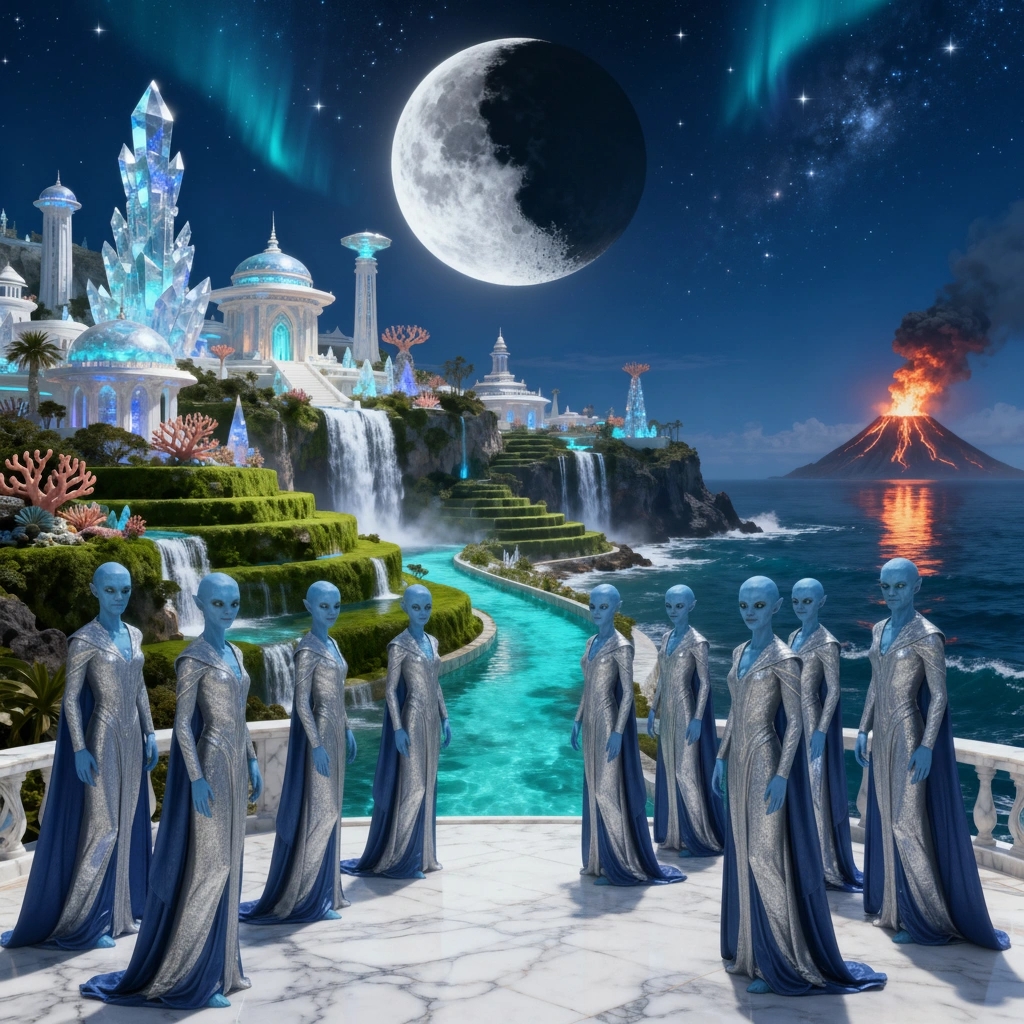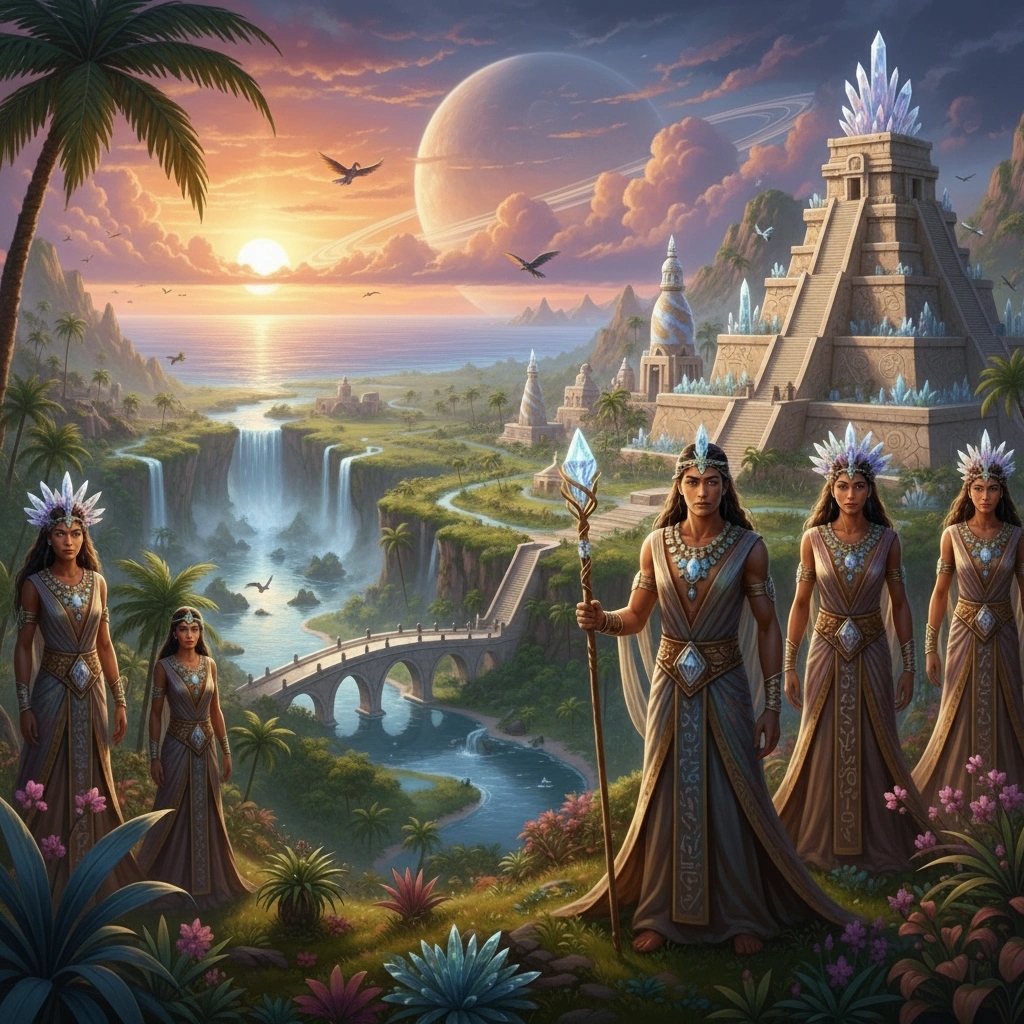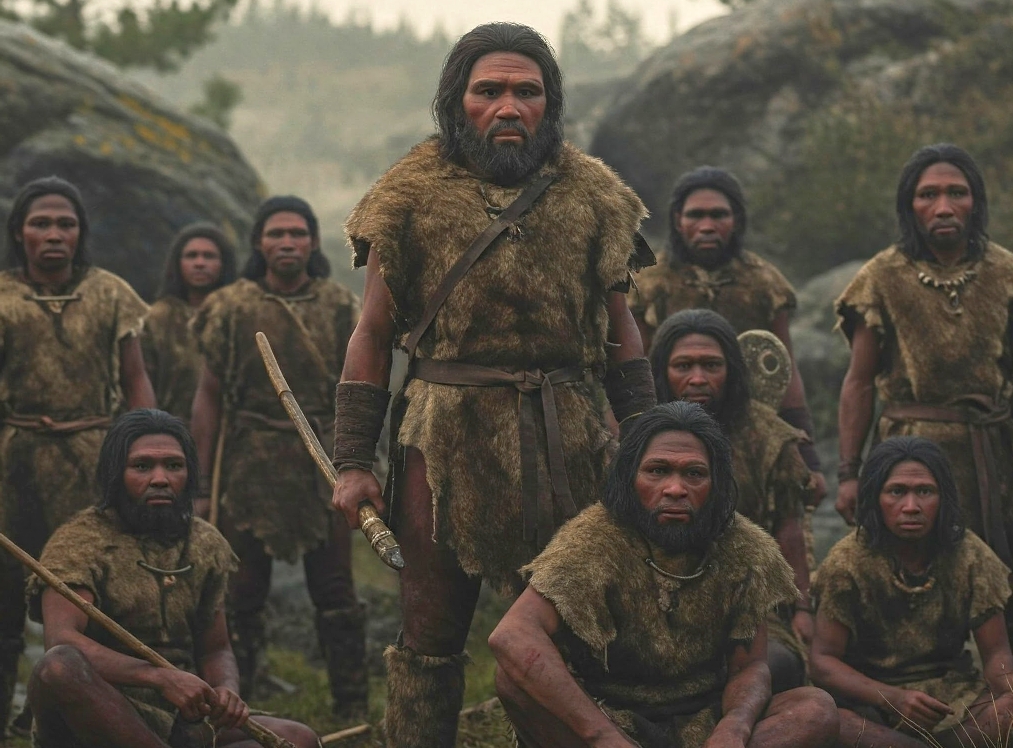
Across the world’s oceans lie countless tales of lost continents—sunken civilizations said to have vanished beneath the waves long before human history began. Among these, two of the most enduring and mysterious are Lemuria and Mu—mythical lands that have captivated scientists, mystics, and storytellers for more than a century.
Origins of the Lemuria Legend
The idea of Lemuria first appeared in the mid-19th century, not in ancient myth, but in scientific speculation. In 1864, zoologist Philip Sclater proposed the existence of a now-lost landmass in the Indian Ocean to explain why fossils of lemurs and related species were found in both Madagascar and India, but nowhere in between. He called this hypothetical continent “Lemuria.” At the time, continental drift was not yet understood, so scientists often explained puzzling fossil distributions through vanished land bridges. Sclater’s “Lemuria” was one such land bridge—an attempt to account for the strange patterns of species distribution. Although Sclater’s hypothesis was later rendered obsolete by plate tectonics, the name “Lemuria” took on a second life in the world of occultism and esoteric thought.
Lemuria in Theosophy and Esoteric Tradition
In the late 1800s, Helena Petrovna Blavatsky, co-founder of the Theosophical Society, transformed Lemuria from a scientific idea into a spiritual legend. In her books The Secret Doctrine and Isis Unveiled, Blavatsky described Lemuria as the home of a now-vanished “Third Root Race” of humanity—ancient, wise beings said to have existed millions of years ago, long before Atlantis.
According to Theosophical teachings Lemuria was a vast continent that once stretched across the Indian and Pacific Oceans. The Lemurians were said to be taller, more ethereal beings, perhaps not fully physical in form. They possessed great spiritual power and lived in harmony with nature. Their civilization was destroyed by volcanic cataclysms and earthquakes, sinking their land beneath the seas. This mystical vision of Lemuria influenced later occult writers, psychics, and mystics, who placed the lost continent in various locations—sometimes under the Indian Ocean, sometimes under the Pacific.:
The Myth of Mu
Closely related—but distinct—is the legend of Mu, a supposed sunken continent in the Pacific Ocean. The idea of Mu originated with Augustus Le Plongeon, a 19th-century archaeologist and adventurer who studied the Maya ruins in Yucatán. Misinterpreting Mayan inscriptions, he claimed they referred to a lost land called Mu, the “Motherland of Civilization,” which he believed had once existed in the Pacific and had been destroyed by cataclysm.
Le Plongeon proposed that survivors from Mu had migrated to Central America and Egypt, seeding both ancient civilizations. His ideas were later popularized and expanded by James Churchward, a British-born occult writer, in his 1926 book The Lost Continent of Mu: The Motherland of Man. Churchward’s version of Mu was massive—stretching across the Pacific, encompassing much of what is now Polynesia, Micronesia, and Melanesia. Churchward claimed Mu was destroyed in a cataclysm 12,000 years ago. He claimed Mu’s people were technologically advanced, had a high moral and spiritual culture, and communicated through a universal symbol language. Churchward claimed to have read ancient “Naacal tablets” in India—texts that no one else has ever seen or verified.

The Fate of the Lost Continents
Both Lemuria and Mu were said to have vanished in tremendous cataclysms—earthquakes, volcanic eruptions, and tsunamis that sent the continents plunging into the ocean depths. These apocalyptic tales often mirror the more famous story of Atlantis, as if the world’s myths preserve a shared memory of great civilizations lost to disaster.
Modern geology, of course, has found no evidence for such continents. The concept of “sunken continents” is incompatible with our understanding of plate tectonics, which shows that continents float on the Earth’s mantle and cannot simply sink. Islands and ocean ridges can rise and fall, but entire continents disappearing beneath the sea is geologically impossible.
Lemuria and Mu in Modern Culture
Despite their scientific dismissal, Lemuria and Mu remain powerful symbols in spiritual, literary, and popular culture. Esoteric and New Age traditions often link Lemuria to concepts of ancient wisdom, spiritual awakening, and human evolution. Some modern channellers claim to receive messages from Lemurian beings who exist on a higher vibrational plane. In H.P. Lovecraft’s Cthulhu Mythos, references to Mu appear as part of his vast fictional prehistory. Lemuria has appeared in comic books, fantasy novels, and video games, often portrayed as a mystical or technologically advanced civilization that predated humanity. In Hawaiian and Californian spiritual circles, Lemuria (sometimes called “Telos”) is said to survive in hidden underground cities, such as beneath Mount Shasta, California.
Echoes of Memory or Myth?
Some researchers have speculated that these myths may preserve folk memories of real events—perhaps rising sea levels at the end of the Ice Age, which did submerge large coastal areas and islands. Others see in Lemuria and Mu expressions of humanity’s nostalgia for a golden age, a paradise lost, or a yearning for origins beyond recorded history. Whether taken as metaphor, myth, or mystic revelation, the stories of Lemuria and Mu continue to fascinate, blurring the lines between science, spirituality, and imagination.
Scientific Skepticism on Lemuria and Mu: Myths, Misinterpretations, and the Search for Lost Continents
For more than a century, the legendary lost continents of Lemuria and Mu have fascinated writers, mystics, and believers in ancient civilizations. Often described as vanished lands that once bridged continents or hosted advanced pre-human cultures, these mythical places continue to capture the imagination of alternative historians and New Age thinkers. Yet, from a scientific perspective, the existence of Lemuria and Mu has been thoroughly debunked. Modern geology, plate tectonics, and oceanography have revealed a very different picture of Earth’s history—one that leaves no room for these sunken continents.
Geological Reality: Why Lemuria and Mu Cannot Exist
The development of plate tectonic theory in the 20th century decisively refuted the possibility of lost continents like Lemuria or Mu. Earth’s crust is made of tectonic plates that move slowly over time, colliding and spreading apart. Oceanic crust is much younger and denser than continental crust, and it cannot “sink” in the way mythical continents are described to have done.
Modern mapping of the seafloor has revealed no trace of any sunken landmass large enough to fit the descriptions of Lemuria or Mu. The ocean basins are composed of basaltic crust, while continents are made of granitic crust; the two have entirely different geological signatures. Seismic and satellite data have shown no hidden continental remnants beneath the Pacific or Indian Oceans.
Misinterpretations and Pseudoscience
Despite clear scientific evidence, the myths of Lemuria and Mu persisted in Theosophy, occult writings, and New Age beliefs. Helena Blavatsky, founder of the Theosophical Society, incorporated Lemuria into her cosmology as the home of a “third root race” of early humans. Later authors connected the lost continents with Atlantis, UFOs, or even spiritual ascension narratives.
Scientists regard these reinterpretations as pseudoscientific—stories built on myth rather than evidence. Archaeologists have found no artifacts, fossils, or cultural remains that indicate any such global civilization predating recorded history. Moreover, genetic and anthropological studies show clear, traceable patterns of human migration that align with known geography, not with vanished continents.

Modern Understanding of Continental Movement
Today, phenomena that once inspired Lemuria and Mu theories are well explained by plate tectonics, continental drift, and land bridges formed during ice ages. For example: The presence of similar species across continents results from continental connections in the past, not from sunken landmasses. India and Madagascar’s shared biological heritage stems from their once being part of the ancient supercontinent Gondwana. In the Pacific, volcanic island chains and submerged microcontinents (like Zealandia, mostly underwater near New Zealand) demonstrate real geological processes—none of which resemble the mythical Mu.
Conclusion: Myth Meets Science
While Lemuria and Mu make for captivating legends and esoteric symbolism, science leaves little doubt about their nonexistence. They remain fascinating cultural myths—products of humanity’s desire to explain ancient mysteries and lost connections—but not lost chapters of geological history. Modern earth science offers something even more wondrous than these myths: a dynamic, ever-changing planet whose continents drift, collide, and reshape the face of Earth over millions of years. In the end, the true story of Earth’s shifting crust is more extraordinary—and more scientifically grounded—than any legend of sunken lands. The legends of Lemuria and Mu remind us how myth and science can intertwine—how a discarded scientific hypothesis can give birth to enduring spiritual mythology. Though no trace of these continents has ever been found on the ocean floor, their legacy lives on in the human imagination: symbols of a forgotten wisdom, sunken beneath the tides of time.


